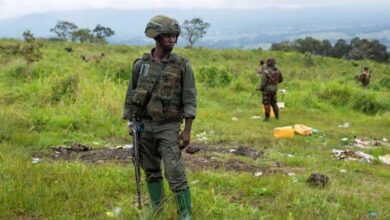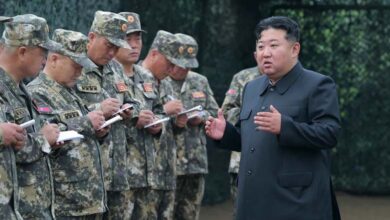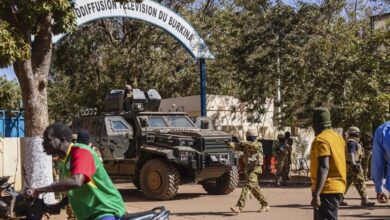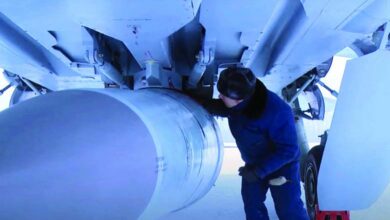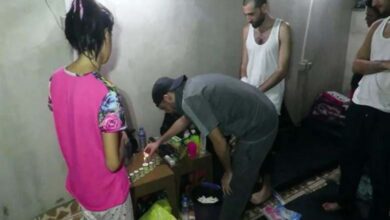Iranian government leaves its citizens prey to crisis… farmers protests over water
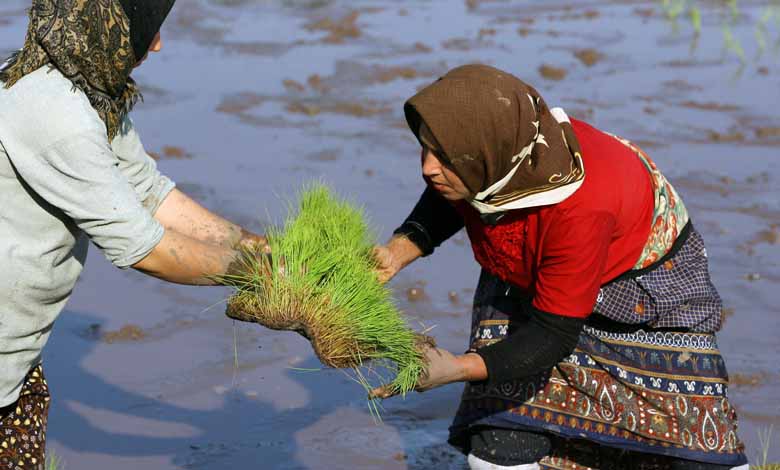
A number of Iranian farmers have organized large protests in the province of Isfahan, in central Iran, since yesterday, Monday. The gatherings took place in front of the water distribution company, and in front of the building of the radio and television in this province, in protest against the lack of allocating a share of water for growing wheat in the current season.
- Security officials: Iran behind al-Kazimi assassination attempt
-
After al-Kazimi assassination attempt… Has Iran lost its link in Iraq?
Farmers protests
“According to opposition media reports, this time the farmers’ protests in Isfahan, Chaharmahal and Bakhtiari provinces have repeatedly taken place in recent years over the loss of their share of the Zayandeh Rud River water and water transport projects”.
Iran International reported the crisis at Zayandeh rud dam, one of the main dams in central Iran, a supplier of drinking water, environment, agriculture and some industrial companies in the central region of Iran, located 110 kilometers west of Isfahan in the city of Jadkan.
The Provinces’ Water Struggle:
According to complaints filed by farmers, the Zayandeh Rud, which is more than 400 kilometers long, has become a seasonal river in recent decades due to lack of rainfall, consecutive drought, density of population and indiscriminate use of water in factories.
Meanwhile, farmers in Isfahan province say they do not get their “fair” share of water from the Zayandeh Rud, the largest river in central Iran, to irrigate crops and enable them to raise livestock. Undue amounts of water go to Chaharmahal and Bakhtiari and Khuzestan provinces.
“This time, the protests have seen demonstrators coming out from all corners, even provinces that have been accused of taking the bulk of the water”.
Frequent protests:
Reports indicate that the river, which had been flowing in abundance for the year, dried up over the past two decades before reaching Isfahan.
“Like many other regions in Iran, Isfahan has also faced drought this year”.
On July 6, 2019, Mohammad Asghari, an official at the Iranian Meteorological Organization, said that the average rainfall across Iran in the first six months of the “agricultural year” that just ended (September to June) was less than 50 percent of the same period last year, with rainfall dropping from 278 mm to 130 mm.
“This was not the first time that protesters had come from Iranian farmers, and at the beginning of 2012, hundreds of farmers protested against water shortages in Isfahan Province”.
- Iran launches “provocative step” before the nuclear talks
-
Why did Iran abandon its preconditions and return to nuclear negotiations?
Clashes with police:
At the time, videos posted on social media revealed violent clashes between police and some farmers. One of the videos showed hundreds of farmers and their families chanting “bastards”.
Another video shows protesters chanting against local authorities for failing to provide water for their farms and protect the lives of their animals. “We will get our share of water, even if we have to die for it”, some chanted.
Prices are low:
“Apart from the water shortage problem, some farmers assert that the low prices set by the government for dairy products and high prices for animal feed lead to their bankruptcy, so they brought hungry cattle in pickup trucks with them during the protest”.
Slaughtering of animals at marches:
Protesters also tried to take their cattle to the grounds of the governor’s office. Some slaughtered the animals, spilled their blood on banners outside government offices, or emptied milk on the ground.
Cattle ranchers held a smaller protest march in Damghan, Semnan province in northern Iran. Farmers who walked to the provincial governor’s office carried signs demanding that they be allowed to set their own prices, based on the cost of animal feed and other expenses, rather than the government setting prices for meat and dairy products.
- Fuel protests, Iran fears second anniversary of bloody protests
-
Iran… Official fears of revival of “fuel protests”
They wrote on one of the signs that a bottle of mineral water was sold for 60,000 riyals (25 cents) while the same amount of milk was 45,000 (18 cents). There were protests in the Takab district of western Azerbaijan by cattle ranchers, who on 4 July blocked the road in front of the city governor’s office with their cattle.
“The collapse of Iran’s agriculture sector and farmers’ conditions continue under the policies of the mullahs’ governments, which have focused their efforts on financing and training terrorist militias to destabilize Middle Eastern countries while leaving Iranian citizens prey to crises”.




